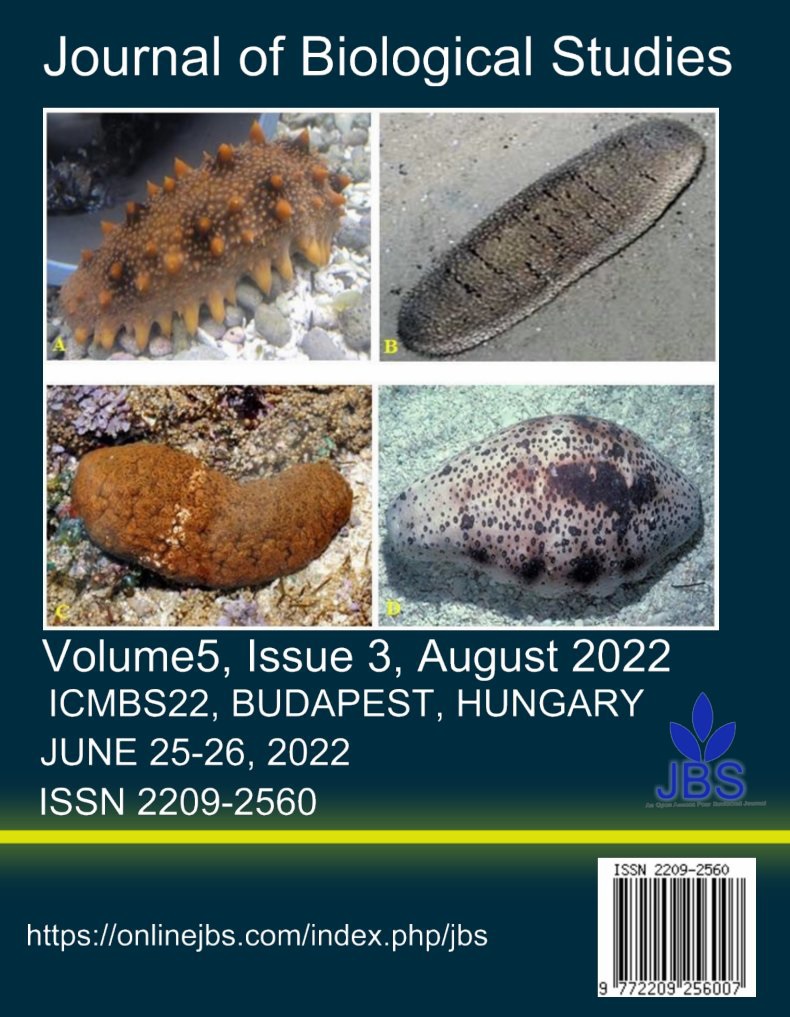The cytotoxic effects of green synthesized AgCl2 nanoparticles on gastric cancer (AGS) cells
Main Article Content
Abstract
In recent years, with the development of nanotechnology, the use of various metal nanoparticles has become widespread specifically in the treatment of cancer. Furthermore, the application of silver nanoparticles (AgNPs) should not be denied in this respect. AgNPs hold great potential in the field of cancer biology and because of their anti-microbial activities they are vastly used in diverse clinical applications. AgNPs possess some physical and chemical features including heterogeneity in size, shape, and capping material. Moreover, their novel cytotoxic characteristics against mammalian cells makes them more applicable in tumor therapy and acting as anti-cancer agents. AgNPs have great potential in tumor diagnosis as well as treatment (Zhao et al., 2022; Păduraru et al., 2022; Patil et al., 2021). Gastric cancer is the fifth most common cancer with more than 1 million people newly diagnosed worldwide each year. Despite its worldwide decline in incidence and mortality over the past 5 decades, gastric cancer remains the third leading cause of cancer-related death (Sexton et al., 2020; Thrift and El-Serag, 2020) Gastric cancer is diagnosed histologically after endoscopic biopsy and staged using CT, endoscopic ultrasound, PET, and laparoscopy. The main treatment for early gastric cancer is endoscopic resection. Non-early operable gastric cancer is treated with surgery, which should include D2 lymphadenectomy (including lymph node stations in the perigastric mesentery and along the celiac arterial branches). Perioperative or adjuvant chemotherapy improves survival in patients with stage 1B or higher cancers. Advanced gastric cancer is treated with sequential lines of chemotherapy, starting with a platinum and fluoropyrimidine doublet in the first line; median survival is less than 1 year. Metastatic gastric cancer remains a non-curative disease. Palliative chemotherapy has been demonstrated to prolong survival without quality of life compromise. Many single-agents and combinations have been confirmed to be active in the treatment of metastatic disease. In the setting of metastatic or inoperable gastric cancer, the current evidence shows that chemotherapy improves survival in comparison to best supportive care and that combination chemotherapy is superior to monotherapy in terms of survival, response rate and symptom control. Although there are no internationally accepted standard regimens, in Europe, ECF (epirubicin, cisplatin, fluorouracil) has been considered the reference regimen; in the US cisplatin-fluoropyrimidine combinations are mainly used, while in Japan, cisplatin with S1 has become the standard. It has also been suggested that immunochemotherapy may improve survival of patients with curatively resected gastric cancer. Targeted therapies licensed to treat gastric cancer include trastuzumab (HER2-positive patients first line), ramucirumab (anti-angiogenic second line), and nivolumab or pembrolizumab (anti-PD-1 third line). Gastrointestinal symptoms are the most notable side effects of chemotherapeutic drugs (Kim et al., 2013; Janunger et al., 2001; Choi et al., 2018; Sastre et al., 2006; Zhou et al., 2017). Many recent studies have shown that green synthesized silver nanoparticles (AgNPs) can have cytotoxic effects on different cancer cells (Yesilot and Aydin, 2019). The biosynthesized AgNPs using the leaves extracts of Hemichroa pentandra showed considerable antioxidant activity and excellent anti-cancer activity against breast cancer cells (Punathil, 2018). Biosynthesized AgNPs from the leaf extract of Ochradenus arabicus can have suppressive effects against the human breast cancer cells (Al-kawmani et al., 2020). Also, green synthesized silver nanoparticles using Teucrium polium leaf extract exhibited significant anticancer activity against MNK45 human gastric cancer cell line (Hashemi et al., 2020). In this study we investigated the cytotoxic effects of green synthesized AgCl2 nanoparticles on gastric cancer (AGS) cells. Onopordum acanthium extract was used to synthesize AgCl2 nanoparticles. Onopordum acanthium has been applied traditionally as bactericide and antitumor agent (Al-Snafi, 2020). Gastric cancer cells were purchased from Pasteur Institute of Iran and cultured in growth medium until they reached 80-90% confluence. The cells were then treated with different concentrations (1.5625, 3.125, 6.25, 12.5, 25 and 50 μg/ml) of AgCl2 nanoparticle for 24 hours. The cytotoxic effect of AgCl2 nanoparticles was assessed using MTT assay method. The results showed that viability of AGS cells did not significantly change 24 hours after treatment with 1.5625 μg/ml of green synthesized AgCl2 nanoparticles compared to the control group; However, the viability in AGS cells significantly decreased when treated with 3.125, 6.25, 12.5, 25 and 50 μg/ml of green synthesized AgCl2 nanoparticles compared to control group. There cytotoxic effect was more in groups treated with 6.25, 12.5, and 25 than groups treated with 3.125, 6.25, and 12.5 μg/ml of green synthesized AgCl2, respectively. There was not significant difference between cell viability of group treated with 25 and 50 μg/ml of green synthesized AgCl2.
Conclusion: Our results show that green synthesized AgCl2 nanoparticles have cytotoxic effects against gastric cancer (AGS) cells in vitro.
Article Details

This work is licensed under a Creative Commons Attribution 4.0 International License.
